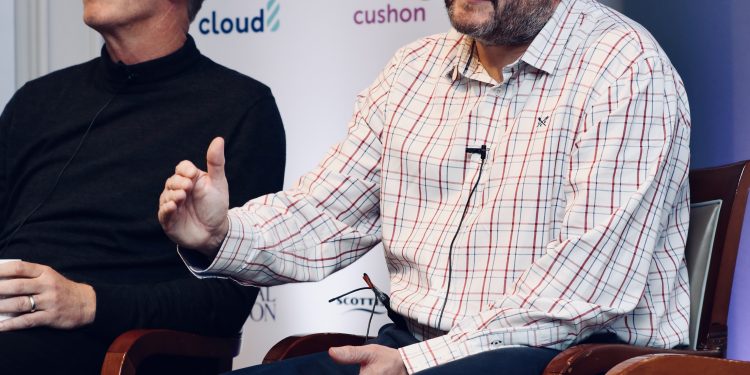The employee benefits sector remains too slow to adopt modern digital platform and communications technology, despite innovation in these areas.
At a panel discussion at the Corporate Adviser Summit, panel members said the industry had to do more to improve.
Cloud8 founder Ian Rummels said there was a “massive gap” between the technological people use in their own homes and the convenience this offers, and the systems available through the workplace.
He said the employee benefits sector remained “miles away” despite there being examples of good technology solutions across the industry. “These need to be accessible to everybody and more investment is needed in this area,” he said.
Nick Burn, chief executive of Gallagher agreed there were improvements needed. However he remained optimistic that there would be significant change within the next 12 months.
He said there was now “general acceptance across the industry” of the need for more personalised communications to help people understand and make decisions about a range of workplace related benefits. Providers were starting to look at “You Tube technology” and fast, personalised video clips as an effective way to help decisions making. “Wider use of this kind of technology isn’t very far away and hopefully we will see quite a difference within 12 months.”
Burns added that regulation can be a hindrance to adopting more modern tech services and says providers need to “lean on regulators” to try to address this issue.
Burns said that the industry need to take a more holistic view of how it delivers products and services, rather than simply improving communication and technology. He said there was a real need to connect employee benefits with corporate purpose. “We need to have the discussion and articulate with clients why they putting in place employee benefits before we look at the ‘what’ and ‘how’ of product and delivery.
“If we understand why an employer is doing this we can designed an employee benefit service that is built around that purpose.”
He pointed out that in many cases this exercise starts at home. He said Gallagher recently undertook a benefit redesigned for its own employees. At the heart of this process he says is a need to talk to the people who use these benefits, and understand whether they value them and are they fit for purpose. This can often be overlooked when advisers are working with corporate clients he said.
Burns says the research among their own staff was enlightening. “We asked people whether they understood what the value of these benefits were in relation to their salary. Around 60 per cent of staff had no idea what the value of these benefits were, and these are people who work in this industry.”
He says one of the lessons from this is that there was an urgent need to change how firms engage and communicate with staff regarding benefits, to ensure people understand both the monetary value of these benefits, as well as what they can deliver.
Both panelists also agreed that there need to be more of a focus on diversity and inclusion across the industry, and this should change both the design of employee benefits packages and the way they are delivered.
Rummels says: “This is another issue where there is considerable progress to be made. If we don’t have more diversity in leadership then nothing will change. It will be the same people with the same background and experience delivering the same ideas.”
Burns says that many organisations were now setting up diversity and inclusion steering groups and committees and it was important to engage them when designed employee benefits packages.
“Bring them into the conversation, this can help identify what some of the problems are and go some way to solve them.”
This is part of the same of issue of realising people aren’t all the same. Burns says: “We need flexibility when it comes to products so people can choose the benefits that are most relevant to them. In the same way we shouldn’t have a one-size-fits-all approach to communication.”
He says technology can be used to get a more nuanced understanding about people’s background: how age, gender, ethnicity, personality types can all affect people’s attitudes to money. Communications can then be tailored to help nudge people in the right direction, rather than putting in place barriers that stop people saving.
Both panelists agreed the pandemic had a significant impact on the employee benefits sector. Rummels points out that on one level it had resulted in people connecting with many benefits, from life insurance to income protection.
“People are more aware of their own mortality. This has made people think about what would happen if they fell ill, who would look after their family.”
Other products such as cash plans have become more attractive, and Rummels says that looking forward there is a lot more interest in employee benefits that offer access to electric cars and bikes for example.
Both Rummels and Burns agreed that the ESG agenda offered significant opportunites for those in the sector.
Burns says: “Increasingly clients will be expecting us to do a deep dive on potential providers regarding on their ESG credentials. Are we qualified enough to understand the impact they have? I am not sure at present, but there is a massive opportunity to develop these skills across the industry.”





